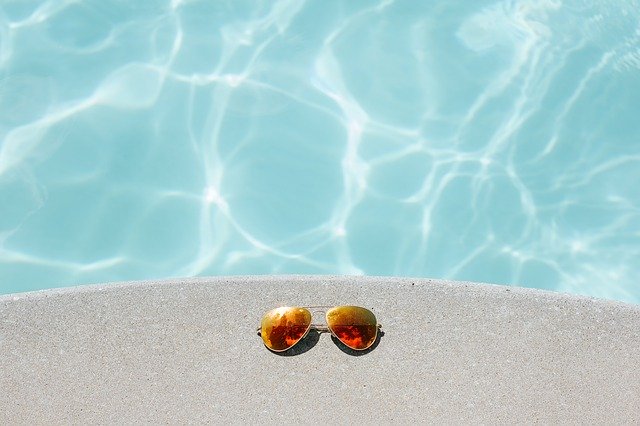Thanksgiving to March 31st:
Mon — Fri: 9 AM - 5 PM
April 1st to Thanksgiving:
Mon & Fri: 9 AM – 5 PM
Tue – Thu: 9 AM – 8 PM

Vinyl-lined swimming pools are incredibly common in Canada, and across North America. Vinyl pools provide a durable, flexible and comfortable way for your family to enjoy their own pool at home. You have a lot of options when it comes to the materials in your swimming pool, but vinyl has remained a popular choice, particularly for pool owners with small children.
If you’re looking for a new swimming pool and thinking about your options or hoping to learn a bit more about vinyl pools, you’ve come to the right place. By understanding more about your vinyl pool, you can maintain your liner correctly and save yourself time and frustration each summer season.
All swimming pools have a similar design. But, the materials used to make a swimming pool will vary from yard to yard. Some swimming pools simply use the shell of the construction materials – concrete or fiberglass – as the outer surface of your pool. In a vinyl-lined pool, a thick, durable vinyl liner is placed between the pool wall and swimmers. This liner needs to be carefully measured and installed to be sure that all-important elements of the pool are protected and thoroughly coated.
A vinyl liner created a water-tight seal that protects your pool walls and equipment and leaves you with a comfortable and easy to clean surface in your swimming pool.
Not every swimming pool requires a vinyl liner. But, vinyl-lined pools are very popular for homeowners, and all aboveground pools are lined in vinyl. If your swimming pool was manufactured with a vinyl liner, you’ll need to replace it to ensure your pool continues to operate correctly.
Concrete pools are simply lined with concrete and do not require a liner to be installed for swimming. Pre-formed fiberglass swimming pools are also designed to be used without a vinyl liner in place.
Vinyl liners for swimming pools are carefully designed and manufactured to withstand swimming pool chemicals and to protect the structure of your pool. It is more expensive than you might think to replace and install a brand new vinyl liner. But, the cost of vinyl varies a lot from pool to pool.
The size of your pool, the layout of your backyard, the thickness of the liner you purchase, and requests for patterns will all impact your final price. To make sure you make the right selection, you’ll need to work with a pool professional to find a firm quote and ensure your liner is installed correctly.
Replacing a vinyl liner is a very difficult job that requires experience, knowledge, and the right tools to complete correctly. Vinyl liners can be impacted by handling and even the temperature outside. Even the smallest mistakes during installation can lead to warping, stretching and tearing in a new liner.
Some handy people are able to figure out how to install their vinyl liner correctly, but we do not recommend this approach. More often than not, a DIY liner installation results in disaster. When things go wrong, you’ll need to pay for a new liner, and the cost to have a professional install it correctly.
Vinyl liners are designed to last for many years, and are composed of very tough material. But, vinyl liners can be damaged when exposed to sharp objects or imbalanced pool water, especially if these conditions last over time.
If your pool water is habitually out of balance in terms of chlorine and pH, your liner can become brittle, wrinkled, discolored and weak. This will all make your liner inflexible, meaning it more likely to fit badly, tear, or allow in leaks. A brittle, sagging or ill-fitting liner will need to be replaced much sooner than one that is cared for correctly.
To prime your liner to last as long as possible, you should be sure to always keep your swimming pool’s alkalinity, chlorine, and pH in balance. You’ll also want to do everything you can to prevent your liner from damage, and to avoid patching it as long as possible. Keeping pets, kids and sharp objects out of the pool can help you to avoid damage to your liner.
Sometimes, your vinyl liner can be damaged from an isolated incident. If you have a small tear in a liner that is otherwise in excellent shape, you may be able to repair your liner, rather than replace it altogether.
Depending on the scope of the damage, a patch kit or service visit from a professional can help your liner to last a few more years. In some cases, even damage that seems very small can be enough to ruin your liner entirely. If you notice any kind of damage to your swimming pool liner, it is best to have it assessed and repaired immediately.
For most swimmers, a vinyl-lined pool is what they are most familiar with when they imagine taking a swim. Vinyl-lined pools are easy to clean, durable and long-lasting. But, replacing a vinyl liner that has been damaged can be very expensive, and doing it more often than you need to can make the cost of owning a pool simply too high.
Taking care of your vinyl liner will help it to last years longer. With some care and effort, you’ll be able to enjoy a pool that is more attractive, more affordable, and more likely to last for years.
No account yet?
Create an AccountNew address: 780 Creditstone Rd, Vaughan